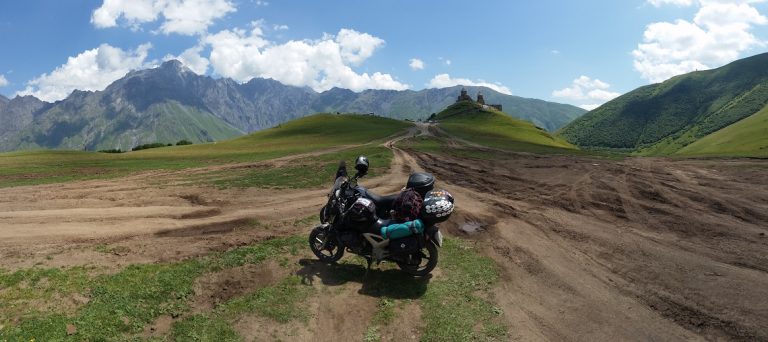Jana Janska travels to Georgia to ride through the country’s spectacular Greater Caucasus mountains while visiting the many historical locations
I had planned to visit Georgia for many years, the main reason being that it’s such a beautiful country and it’s one that’s not usually considered an adventure motorcycling destination.
There were three of us who had eventually decided to make the trip over, myself, from Slovakia on my Honda CBF 250, and my two friends from the Czech Republic, Wiktor (who rides a KTM 990 Adventure) and Michal (Triumph Tiger 800).
We set off from Slovakia on the 18 July, crossing Hungary, Serbia and Romania until after a few hundred miles we reached Beloslav, a port on the Bulgarian coast.
From here we set sail for Batumi in Georgia, across the Black Sea, a journey that took us three days in total. While there’s not an awful lot to do on the ship we spent our time sleeping or watching the dolphins playing in the wake until we finally docked at our destination.
After the customary checking of documents and passports by the Georgian authorities, we were allowed to depart the vessel and explore Batumi.
It’s a very modern and busy city with high buildings, nice beaches and famous statues of Ali and Nino, the protagonists of an Azerbaijani love story. We had heard a lot about Georgian traffic before we got to the country, and in reality, it was a lot worse than we could have imagined.
We had to be careful on the roads as cars drive very fast, often without rules, and motorbikes are pretty much ignored.
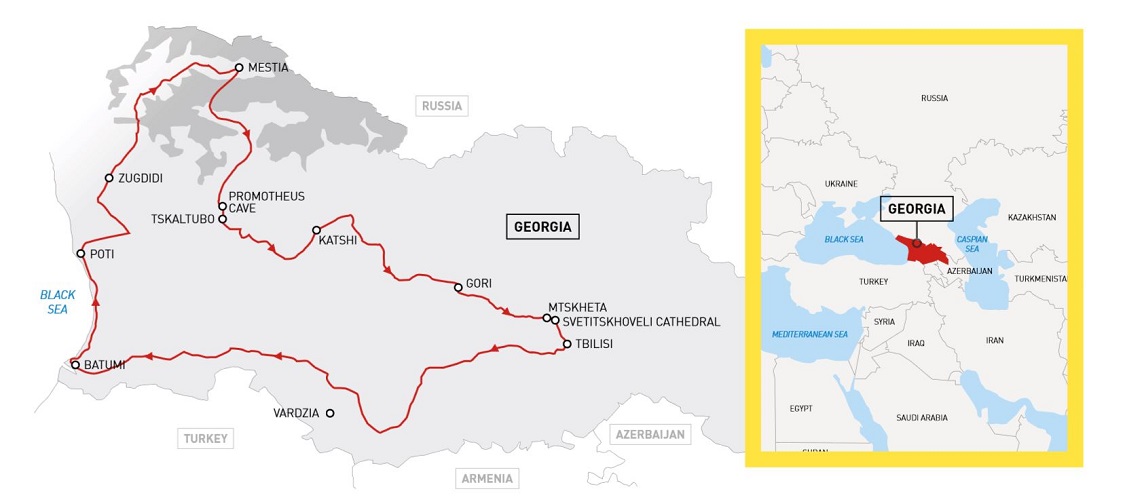
Our first stop after Batumi was the town of Mestia in the region of Svaneti. The ride took us through the towns of Poti and Zugdidi before ushering along a beautifully tarmacked road through the mountains, twisting and turning for over 60 miles, with the views getting even more beautiful after every turn.
The town of Mestia, in the Greater Caucasus Mountains in northwest Georgia, is famous for a number of medieval monuments, churches and fortified towers.
The Svanetian Towers were built to protect the town against invaders and raiders and they also protected the various families from the blood feud that often took place in these communities.
The area is dominated by Ushba, a peak that rises to an altitude of 4,710 metres, and is known as the Matterhorn of the Caucasus for its dramatic rock faces and spire-shaped double summit.
We stayed the night in Mestia, camping in the back garden of one of the family houses in the town.
Mestia is a popular tourist destination so there are plenty of places to stay and quite a few shops where you can buy souvenirs.
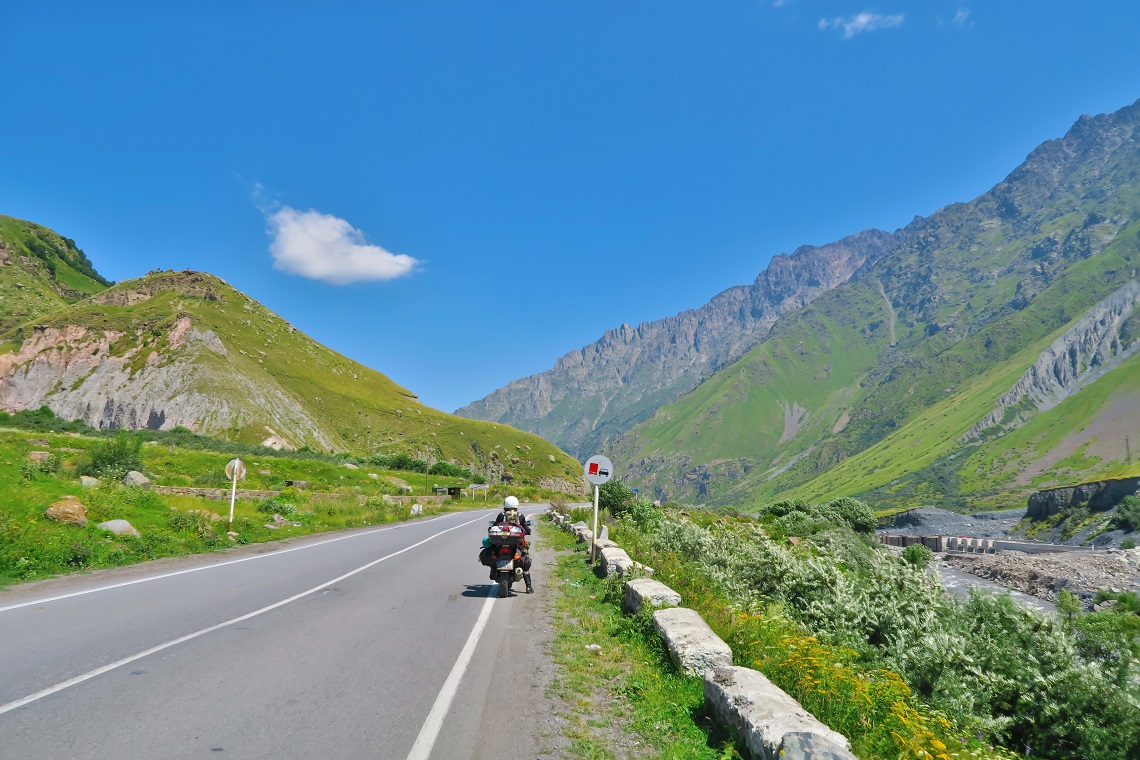
The next day we took a trip to Zuruldi Restaurant, the highest restaurant in Georgia’s Svaneti region which sits at 2,340 metres.
The place affords spectacular views of Ushba and the magnificent glacier. Our time in Mestia had come to an end and so we headed to Tskaltubo near Kutaisi.
The route to Tskaltubo is very slow as in Western Georgia the roads are ‘safari style’, with cows, pigs and goats meandering onto the tarmac at their will.
The ride is worth it though, as near the town of Tskaltubo sits the Prometheus Cave. The cave is one of Georgia’s natural wonders, offering visitors the chance to see breath-taking stalactites, stalagmites, curtain waterfalls, cave pears and underground rivers and lakes.
We tried to camp close to the ticked centre so that we’d be ready for the first tour of the day. We arrived well before the opening time, but fortunately, the young guide was kind and willing enough to do a special tour only for us.
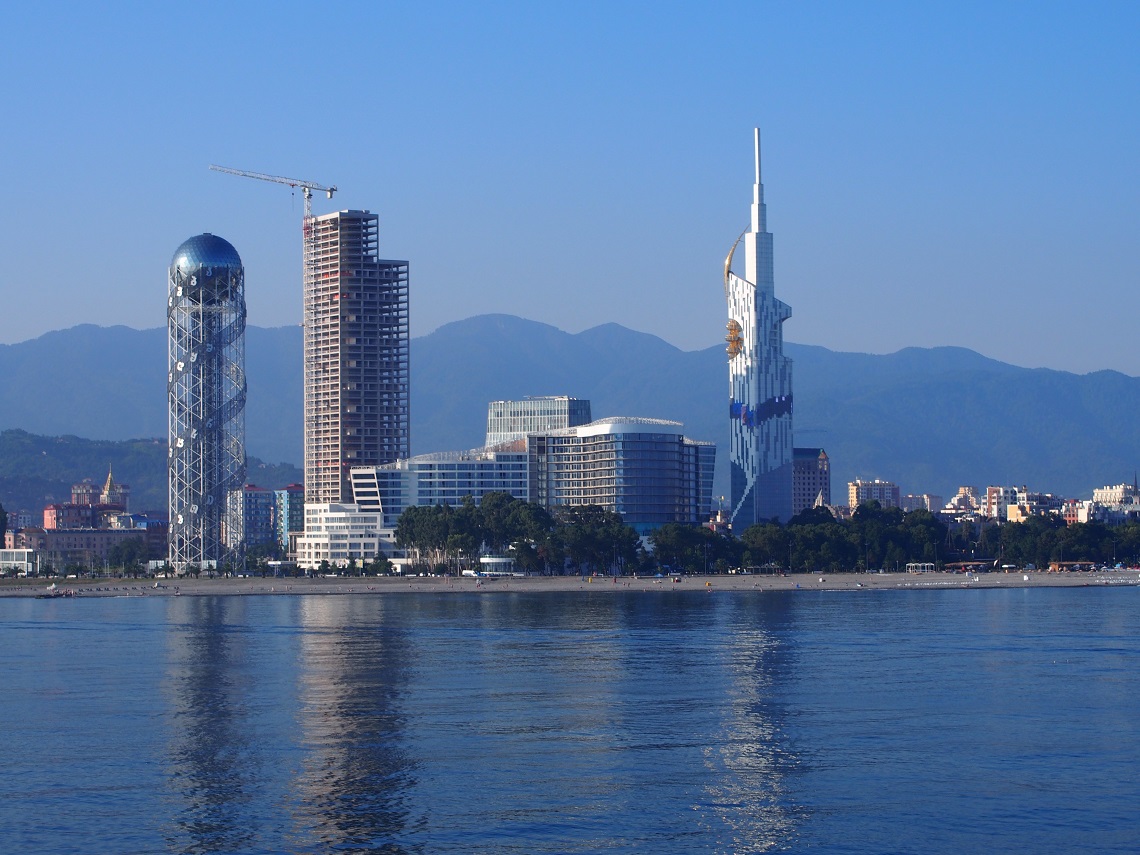
We didn’t even have to buy tickets, and he didn’t want any money from us for his favour. After visiting the caves we continued on to the village of Katskhi to see the wondrous limestone rock pillar.
The 40-metre high rock is venerated as the Pillar of Life, symbolising the True Cross. At the top sits a small church, where monks still live today. It’s a very famous place in Georgia.
From here we travelled to the town of Gori, the birthplace of none other than Josef Stalin. In Gori, we took the chance to visit Stalin’s museum and his birthplace, though we didn’t stay for too long and before we knew it we were in Mtskheta, which lies at the confluence of the Agravi and Mtkvari rivers.
Mtskheta, one of the oldest cities in Georgia, which was declared ‘The Holy City’ by the Georgian Orthodox Church in 2014.
We arrived at The Holy City early in the evening and spent the night in a small guesthouse. While there you have to visit the main square, it has such a magical feeling to it.
We spent the day exploring the town and visited the Svetitskhoveli Cathedral, known as the burial site of Christ’s Mantle, the clothing which was worn by Jesus when he was crucified.
The cathedral is the second largest building in Georgia and is a beautiful sight. After that, we went to the Jvari monastery before getting back in the saddle to continue our tour of Georgia.
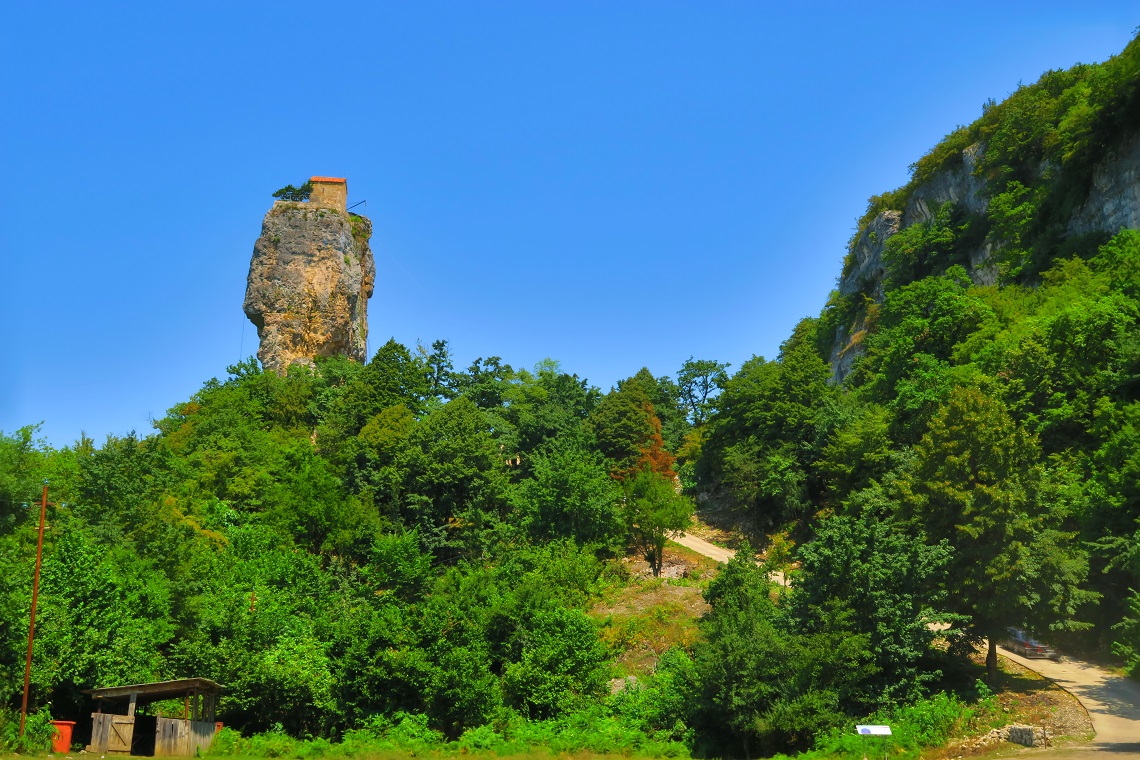
Our route took us to the Kazbegi region, along an old military road that continues across the Russian border. Our intention was to head into the mountains of the Greater Caucasus, and mile after mile the towering peaks became bigger and higher.
The road is covered in asphalt, but there are sections of it that are nothing more than a gravel trail. We arrived at the Jvari pass, where the road reaches its maximum altitude of 2,379 metres.
For most of our ride, the weather was perfect, with the sunshine beating down on us all day and temperatures sticking around the 35C mark, but at 2,300 metres high, the air is cold and it’s time to get the insulated clothing out.
Near the Jvari pass sits the Russian Georgian Friendship Monument which is decorated in colourful murals.
Built-in 1983, the monument is meant to celebrate the friendship between the two countries, though if you’ve followed the news over the last ten years you’ll see the irony in the building. It’s a bizarre sight but one worth seeing nonetheless.
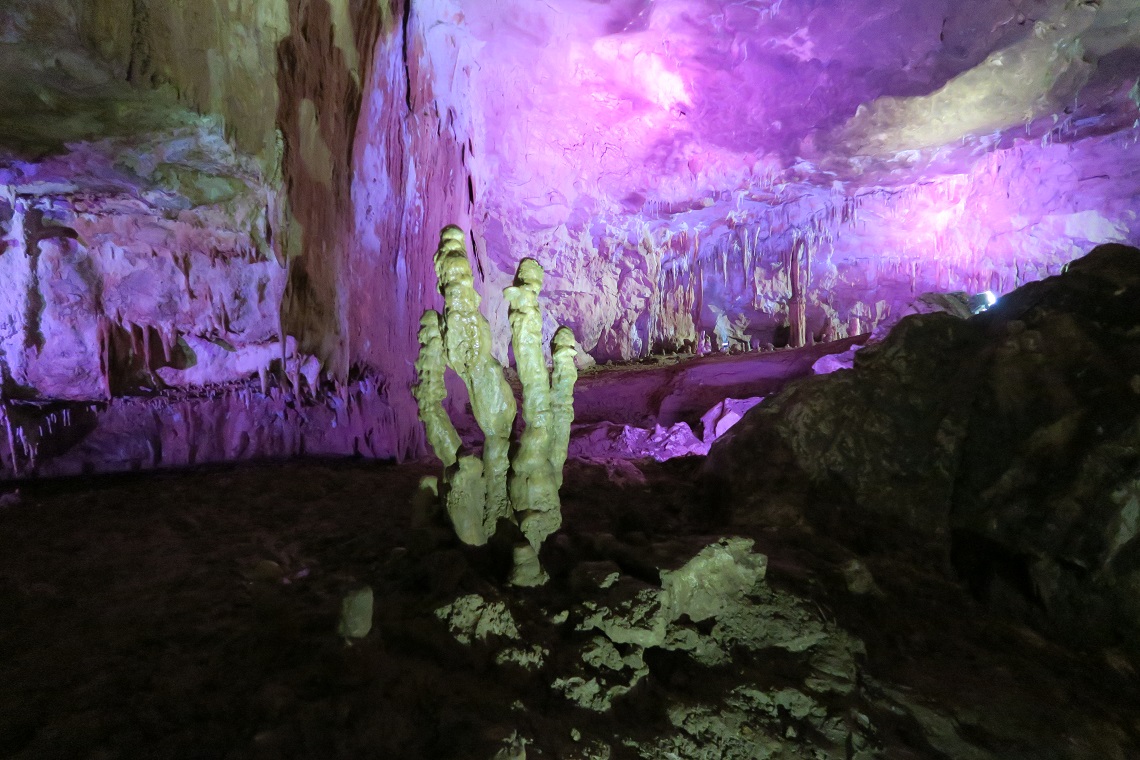
The centre of the Kazbegi region is a small town called Stepantsminda, and near this town, there’s a symbol of Georgia, and the main reason for our ride – the Gergeti Trinity Church.
It was evening by the time we reached where we had intended to be, and so we camped up in a forest by the roadside.
The morning saw us riding to the Russian border, if we were to carry on the road we’d eventually reach the city of Vladikavkaz, but we turn back and head deeper into Georgia.
The ride is amazing as the road cuts its way through gorgeous, high mountains and stunning scenery until we reach the hill on which Gergeti Trinity Church has stood for over 700 years.
The road to the top is only four miles long, but it’s incredibly difficult to ride. A narrow trail with gravel, mud and stones to navigate while you try to pull the bike up the steep climbs.
As we reach the top I realise that all the effort was worth it. It’s one of the most beautiful places I have ever visited, overlooking large meadows and expansive views of the valley below.
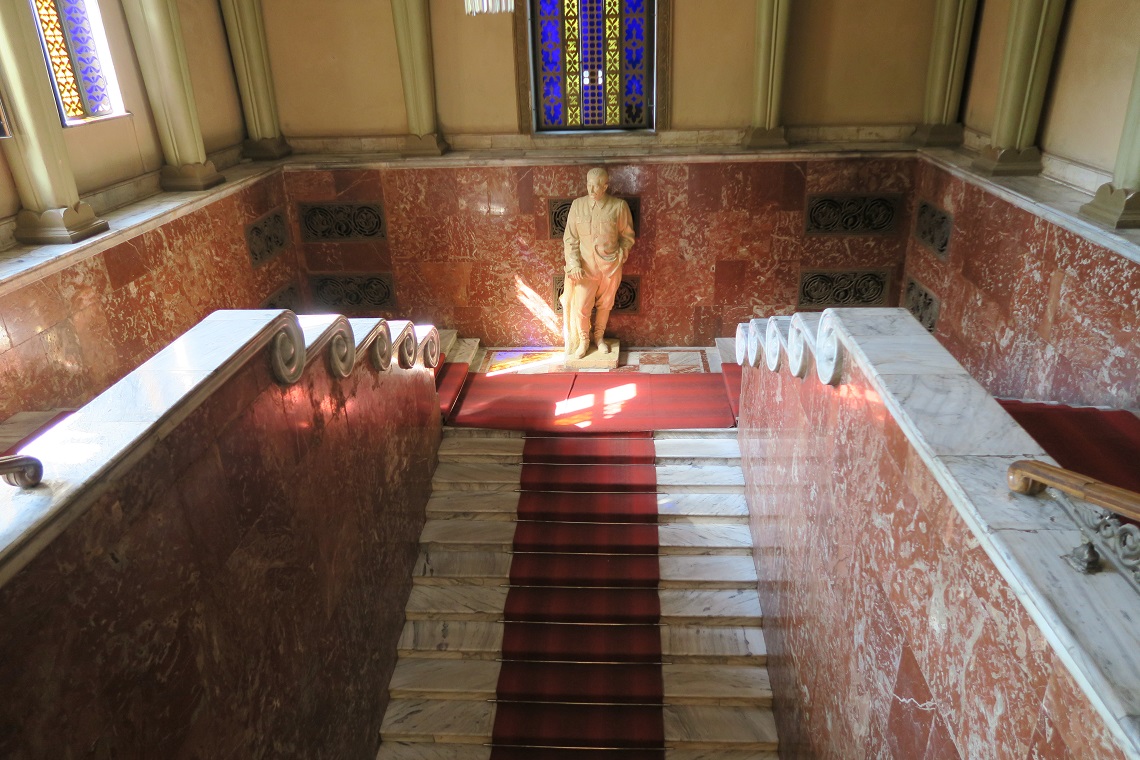
Gergeti Trinity Church was built at 2,170m, on the hill under Mount Kazbek which, at 5,047m, is the third highest mountain in Georgia.
The church is a popular destination for hikers who wish to trek the three-hour-long hill climb, while it’s also a place of pilgrimage. While we were at the church we met two bikers from Russia, both on Hondas.
We sat in the meadow for a while, enjoying the incredible feeling of being in such a stunning location, before we attempted the steep ride down. This region is truly one of the most beautiful places on earth.
The end of our next stage was in Tbilisi, the capital city of Georgia. On arrival, we attempted to find the historical centre of the city, but my SatNav decided not to register the location.
It was dark and so we decided to take a wander through the streets. The locals were delightful, and all willing to help us, even if they didn’t speak English.
Finally, we met a taxi driver who was fluent in English who told us to follow him as he guided us to the centre. In the old town we stayed in a hotel, Georgian prices are very reasonable – the hotel costing us just £15, while fuel set us back just 50p a litre.
After recuperating we spent the day discovering Tbilisi’s historical centre, which is renowned for its picturesque pastel-coloured wooden and brick houses with open, carved balconies.
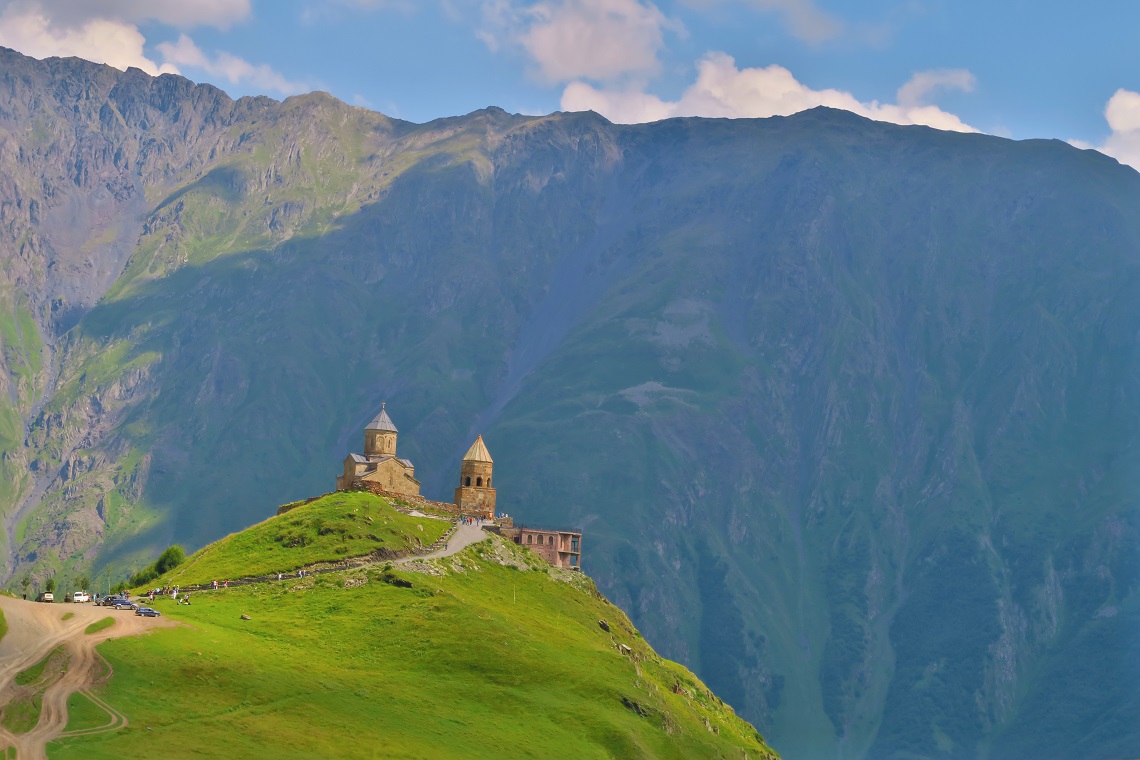
The houses are mainly from the 19th Century as much of the city was destroyed by the devastating Persian invasions of 1795.
The first thing we decide to see is the Bridge of Peace, a bow-shaped pedestrian bridge over the Mtkvari River. Designed by the Italian architect Michele de Lucchim, the 150-metre bridge was built in Italy and transported to Tbilisi in 200 trucks.
Our next city adventure saw us riding Tbilisi’s tramway, from Rike Park to the Narikala Fortress. The ancient fortress sits on a steep hill overlooking the city, and the main site here is the St. Nicolas church that stands in the lower court.
You’ll also see the statue of Kartvlis Deda, the Mother of Georgia, a 20-metre tall aluminium statue that symbolises the Georgian national character, with a bowl of wine in her left hand to greet her friends, and a sword in her right to say hi to her enemies.
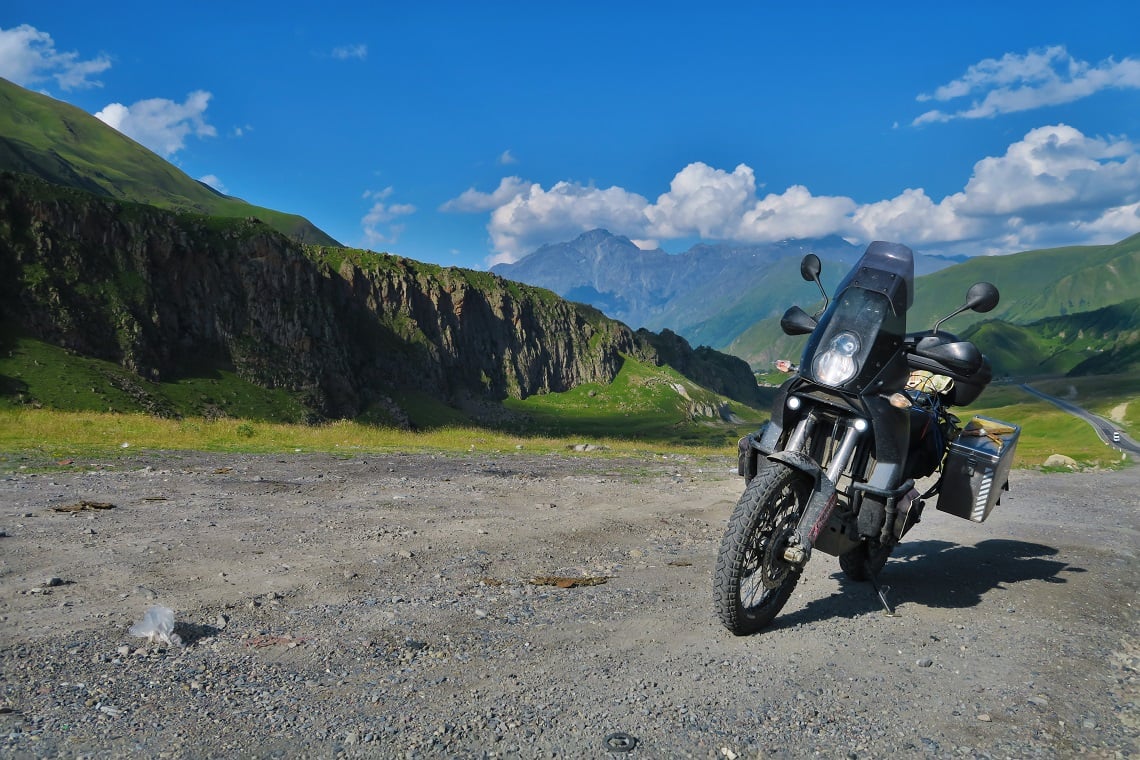
The views from the fortress are nothing short of amazing, and from there we spotted a golden roof. We didn’t know what it was but decided we had to find out. As it happened, it was the Holy Trinity Cathedral of Tbilisi.
Inside the cathedral is huge, with paintings all over the walls and the smell of burning candles wafting through the air. In the afternoon we decided we’d seen enough and returned to our bikes before riding to the town of Gori once again.
Time was running out on our ride, but we decided to make a stop off in Uplistsikhe cave city, one of the oldest urban settlements in Georgia. Rooms were carved into the stone providing spectacular views overlooking a valley.
From there we took a short ride to Vardzia, a fascinating cave monastery site. Our maps were showing us a road from Akhaltsikhe to Khulo, though when we reached it turned out to be a 35-mile long off-road track.
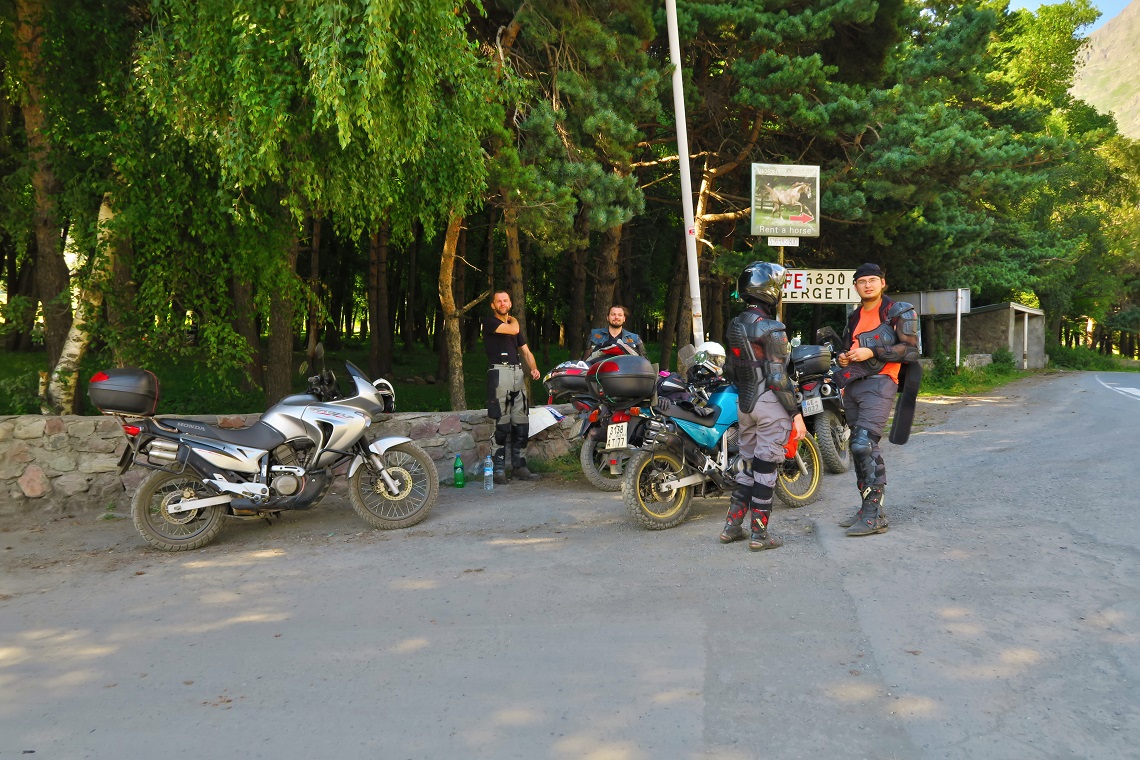
Though that didn’t put us off, and the riding was incredible through the beautiful nature. After dusk, we decided to stop in a small villager where, in no time, we were surrounded by locals who were keen to find us accommodation for the night.
We stayed in the house of the local bar landlord and together with the locals we drank their homemade spirits while they taught us to sing their song, Sakartvelo Lamazo.
In the morning, to clear our heads, we took a ride to Gonio beach for a quick swim, before riding to the Turkish border for the start of our long, long ride home.
Georgia turned out to be a beautiful and lovely country between the Black and Caspian Sea. There are the gorgeous mountains of the Greater Caucasus, friendly and kind people, breath-taking places and fascinating historic sites to see.
Travelling this country on a motorbike is a real adventure, so go and do it.

